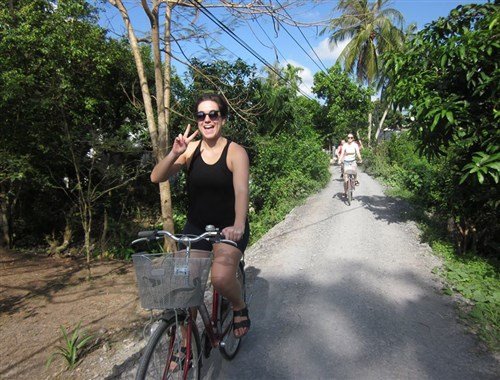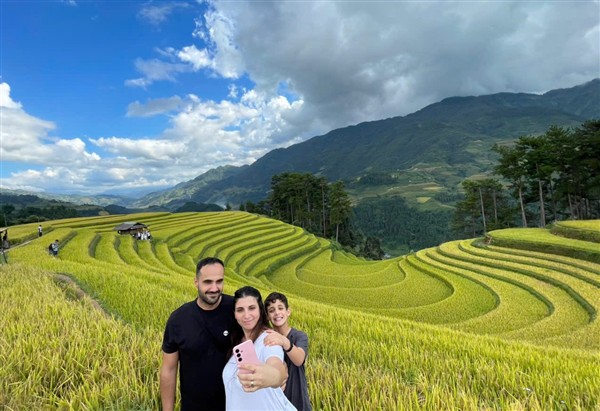Getting around in Vietnam

Vietnam’s travel network continues to improve with the roads in a mostly acceptable standard when it concerns the surface. The majority of the transport in the country takes place by road with a major transport route including Highway 1 that is shockingly busy and desperately narrow in parts and runs from the capital city, Hanoi in the north to Ho Chi Minh City in the south, and passes major cities like Nha Trang, Hue and Da Nang.
Tourists on the Vietnam travel packages can travel in a decent quality air-conditioned coach, buses, or by train with its sleeper berths that may be appreciated on longer journeys. Plus, the domestic flights offer a time-efficient and comfortable service that significantly shortens the travel time within the country, and is still relatively inexpensive.
Here are some of the most popular ways to get around in Vietnam:
Bus
The majority of travellers make use of the bus service for getting around Vietnam. Most of the bus routes have fixed prices with tickets, while the open-tour buses that feature in the main tourist areas have helped to increase the comfort levels. For longer journeys, there is a choice of using the buses with sleeper berths. Prices for a long distance trip from Hanoi to Ho Chi Minh City costs in the region of $30 to $75, while local travel within a major tourist destination costs less than a dollar.
Boat or ferry service
A boat tour of the popular tourist destinations like Halong Bay is certain to make an enjoyable experience on the Vietnam tours. Plus, there is the regular scheduled ferry service – weather permitting - that operates year-round to several of Vietnam’s major islands such as Con Dao, Cat Ba and Phu Quoc. Plus, there are hydrofoil or ferry services that run from Halong City to Bai Tu Long and Mong Cai, from Ho Chi Minh City to Vung Tau and from Hai Phong to Cat Ba. Elsewhere, there are still a few river ferries in operation that are hauled from bank to bank along the Mekong River.

Air
Flying is a much appreciated time-saver when it comes to the long journeys and can easily saves days of travel time compared to solely using buses and trains. For instance, a trip from Hanoi in the north to Ho Chi Minh City in the south can take a few hours by air, but up to 30-40 hours on a train. Plus, flying on the major airlines like Vietnam Airlines or Jetstar is relatively inexpensive with costs for this journey in the region of $45-60. Domestic flights are available for many of the popular tourist destinations, such as Phu Quoc Island, Nha Trang, Da Nang and Hue. For travellers on the tours of Vietnam, you will need to have your passport with you when making the internal flights.
There are several carriers that operate domestic flights with popular routes like Ho Chi Minh City or Hanoi flying to most major airports throughout the country.
Rail
The regular service and amazing prices of the buses throughout the country means that a lot less travellers use the train service. But, the train is a practical choice for a variety of reasons. For instance, there are several train routes that make it possible to see the natural beauty of the countryside, as well as not having to worry about the near-collisions on roads with motorbikes, cars, trucks, dogs, etc.
A major stretch of rail network is the 2500 km line that runs from Ho Chi Minh City to the Chinese border. Even though this line is being upgraded, there is quite a lot of the original line that dates to the colonial period. Rail transport can be slow in certain areas, but a train journey is certain to be more relaxing than travelling by road. A few of the popular routes with travellers on the tours in Vietnam include the overnight service between Hanoi up to Lao Cai for connection to Sapa and takes up to 9 hours and Hue to Hanoi which takes in the region of 11 to 16 hours to complete. A short shuttle service includes the route from Da Nang to Hue with a travel time of approx 2 to 3 hours.
Car and jeep
Self-hire hire cars are yet a thing in Vietnam, but that may well be a blessing for the tourists in view of the traffic conditions. But, hiring a vehicle with a driver is plentiful and popular. Most of the decent size cities have the tourist offices, agencies, or companies that can organise the hire of a minibus, jeep or car. For the group travels on the holiday to Vietnam, this can make a quite inexpensive means of transport. Plus, the hire car gives great flexibility and means it is possible to easily organise the personal itinerary that matches your own tastes. Prices can vary, but expect to pay in the region of $50-$90 per day (depends on the vehicle’s level of comfort, age, size, type, etc.).

Motorbike
Motorbike hire is a real possibility in most of the tourist-friendly cities and towns. A motorbike cruise of the countryside or mountainous regions is certain to appeal to the independent travellers. But, the long-distance bike tour should be limited to the experienced bikers because some of the roads, especially those with heavy traffic, can be distinctly dangerous. But for those travellers that love to ride, the best biking destinations to be found are around the Mekong Delta, the central highlands and in the northern mountains. Plus, there is the pristine tarmac of the Ho Chi Minh Highway that offers some wonderful scenery.
For the long haul trip, Highway 1 from Hanoi to Ho Chi Minh City can take in the region of two weeks to complete (travelling an average distance of 150 km per day). Most of the tourist centres have motorbikes for hire; the average rate is $5 per day for a manual shift bike or $6-$7 per day for automatics.
Bicycle
Cycling is a fun and enjoyable way to get around town and makes it easy to explore the local sightseeing attractions. The price of a daily bicycle hire is in the region of $2.50. For the more adventurous traveller, it is even possible to book a long-distance cycling holiday.





























